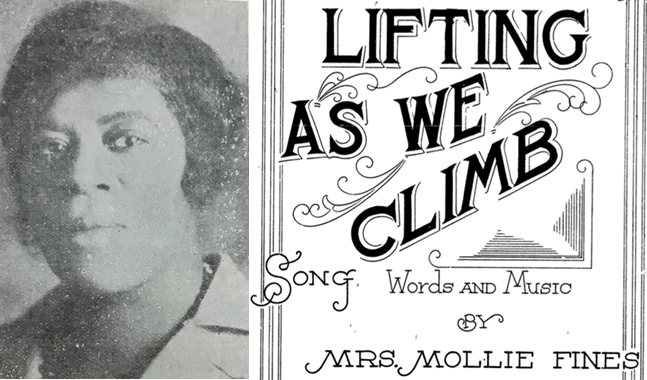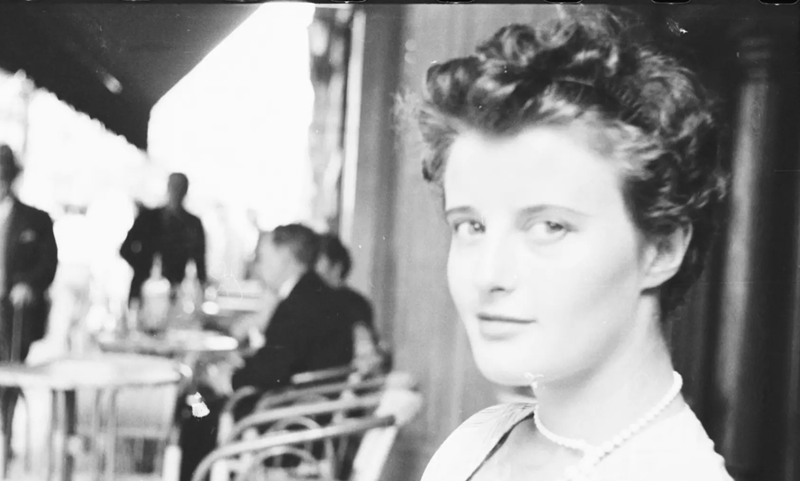To celebrate the summer solstice, we at WSF offer this baker’s dozen group of songs about summer (readers in the Southern Hemisphere may prefer our December playlist). We expect that some of you will binge and listen to them all at one go, that others will dole them out a song or two at a time, and that still others will pick and choose. Please recommend this list to your friends. With this post we will take a break for two or three weeks.
Mark Burford
Possessing one of the most distinctive postwar pop voices, Brazilian singer Astrud Gilberto brings her breathy nonchalance—most closely associated with sixties bossa nova—to “La valse des lilas,” written in 1954 by Michel Legrand, Eddie Barclay, and Eddy Marnay, and given new English words, “Once Upon a Summertime,” shortly thereafter by Johnny Mercer. The shift from the more philosophical French lyrics to Mercer’s focus on lost summer love makes it a different song, as do Gil Evans’ arrangement and Gilberto’s elastic phrasing, which transform a Parisian waltz into something freer, approaching jazz recitative. But the continuously reharmonized melody, drifting from minor to major, and Gilberto’s stubbornly ambiguous affect preserve the song’s pas de deux of painful regret and persistent hope.
Verica Grmusa
Dora Pejačević (1885-1923), born in Austro-Hungary to a Croatian father and Hungarian mother, was the composer of the first piano concerto (Piano Concerto in G Minor, op. 33) and the first symphony (Symphony in F# Minor, op. 41) by a Croatian composer. She also composed thirty-three songs, almost all to German texts, ranging from settings of her own poetry to those of poems by Karl Kraus, Rainer Maria Rilke, and Friedrich Nietzsche. In 1907 she composed the cycle Sieben Lieder (op. 23) to poems of Wilhelmine Wickenburg-Almásy from the collection Letzte Gedichte (Vienna: C. Gerold, 1890). The seven miniatures evoke various love moods and depict Pejačević’s enchantment with Wagner. “In den Blättern wühlt” is the penultimate song of the cycle. This link has the original text. Here is a translation:
In the Leaves Burrows
Summer wind is playing in the leaves in the forest!
And he laughs like a funny child after the morning rest.
But later, when the frost shot through the branches in fir,
There is no leaf strong enough, in the leafy branches terror is released!
In the springtime my heartache was child’s play,
Now my heart trembles weakly, a leaf on the frozen stalk!
Fredara Mareva Hadley
This summer, more than most, brings anticipation of lazy hot days, picnics with friends, and a parade of sunny days. Bassist Michael Olatuja—born in London, raised in Nigeria, based in New York—released his album Lagos Pepper Soup in 2020 right as the world shut down. One of the standout songs on his excellent album is “Brighter Day,” sung by singer-composer Laura Mvula. On “Brighter Day,” Mvula’s voice is a clarion call rife with a hope that rings out among the well-mixed polyrhythms and as strings playfully respond to the call of her voice. As the vamp swells she repeats, “I’m ready for this. I’m ready for happiness.” Her exclamation is the best hope for a summer of newness, emergence, and joy.
Marian Wilson Kimber
Phyllis Fergus (1887-1964) was active in women’s musical organizations in Chicago. She served as the first musician president of the National League of American Pen Women and planned two all-women composer concerts at the White House for Eleanor Roosevelt in 1934 and 1936.
As a composer, Fergus specialized in “story poems,” her name for a genre also known as “musical readings,” in which the text is spoken rather than sung. Most often composed by women and heard by female audiences, the genre frequently treats romance with a comic or satirical tone. With swirling impressionistic piano waves depicting the seaside, Fergus’s A Summer Idyll, a “moon in June” miniature about a “spooning” couple, does not have the expected outcome.
Natasha Loges
Born in Sheffield, Muriel Herbert (1897-1984) grew up in Liverpool. The death of her father when she was twelve plunged the family into poverty. The Liverpool Scholarship in Composition enabled her to study at the Royal College of Music in 1917. By the 1920s, her songs, which set many unusual and contemporary poets, were being published. But she got married in 1925, and by the 1940s, as family demands increased and the marriage had collapsed, Herbert’s composition declined. She left over 100 songs, around a third of which have been recorded. “Song—I cannot lose thee for a day,” composed in 1927 sets a tender-hearted poem by George Meredith (1828-1909). The undulating piano part evokes the gentle movement of trees, but also the continuous sense of movement and travel which underpins the song. Listen for the gorgeous modulations under the words: “And in the lull of wind and rain, / Fresh voices make a sweet refrain,” and the corresponding lines in the next verse; also the perfectly timed melodic climax under “O shield my love, strong arm above!” Writing a good strophic song is a real feat, and Herbert had a perfect understanding of this skill.
Emily Milius
In this summery anthem, Bailey Rae’s vocal delivery—including vocal fry, breathiness, and effortless navigation between registers and styles—captures sunny relaxation as she sings about the cinnamon-like sweetness of the summer and finding one’s self. This song reminds us that not only is change important, but it is necessary and follows us through life. To everyone navigating such big changes right now, both societally and personally, Bailey Rae reminds you that “you’re gonna find yourself somewhere, somehow.”
Carol J. Oja
The singer-songwriter Iris DeMent opens her song “Childhood Memories” with the lyric “Fireflies inside of a mason jar,” evoking an image of a child playing at dusk on a summer evening. Emerging from a fusion of southern folk and country, DeMent’s voice has a keening pathos that hovers between pain and pleasure. Her poetic world meditates on loss, probing the relentless passage of time and the fundamental mysteries of life. In “Childhood Memories,” from her second album My Life (1993), she recalls long-ago summers filled with imaginative play (“We built a raft and travelled around the world”) and sexual experimentation (“When I was just a kid you taught my prayers to me / Then you turned around and you told me about those birds and bees”). It is wise to grab a box of Kleenex before experiencing her artistry.
Nicole Panizza
Selecting a song for the WSF summer playlist, I am keen to not only champion a young female art song composer, but to also highlight an example of poetic setting that innovates beyond more conventional compositional tropes. “This Little Rose,” a setting by composer and vocalist Ella Jarman-Pinto of a poem by Emily Dickinson, was written on a sun-bathed dining room piano at the vibrant Caer Llan Jazz Workshop in Wales, on a beautiful summer’s day in 2010. The text serves as an ideal example of Dickinson’s early work (from 1858), and directly attests to her love of nature-as-metaphor. The speaker laments the fact that this seemingly insignificant “little Rose” will perish, without due attention and recognition. Dickinson plays on the notion of expendability, yet concurrently reminds the reader that even the smallest of creatures—such as the bee, butterfly, and bird, and the ephemeral breeze—will feel its loss.
The musical score, a contemporary lullaby, is a paean to human inter-connection. Jarman-Pinto elegantly captures the cyclical evolution of the flower’s lifecycle through the recurring syncopated piano motif, while at the same time juxtaposing the rose’s quiet, statuesque power, through the undulating ebb and flow of the vocal line. The creative merging of text and music paints an exquisite picture of the beauty within minutia. It serves as a reminder of our inherent value and enduring relationship to each other.
Nobody knows this little Rose–
It might a pilgrim be
Did I not take it from the ways
And lift it up to thee.
Only a Bee will miss it–
Only a Butterfly,
Hastening from far journey–
On its breast to lie–
Only a Bird will wonder–
Only a Breeze will sigh–
Ah Little Rose–how easy
For such as thee to die!
Christopher Reynolds
“Summer’s here and the time is right / For dancing in the street.” No one involved with the recording of Martha and the Vandellas’ “Dancing in the Street,” issued on 31 July 1964, had a clue about the strange fate that awaited this song. Motown songwriters Mickey Stevenson, Ivy Jo Hunter, and Marvin Gaye, and singers Martha Reeves, Rosaland Ashford and Betty Kelley, knew it as a dance song, a sure hit. But in that hot, racially charged summer of 1964, it quickly became a Civil Rights song, even a “radical anthem,” one banned on many radio stations across the country. That was the summer that Southern whites, led by the Ku Klux Klan, torched 36 Black churches; that was the summer of urban riots in Harlem, Bedford Stuyvesant, Rochester, Philadelphia, Jacksonville, Chicago, Watts, and several cities in New Jersey. The invitation to “dance in the streets” was perceived by many white adults as a threatening call to action. The song’s “invitation across the nation,” and its references to dancing in the streets of New York, Philadelphia, Chicago, Baltimore and Detroit seemed beyond coincidental.
Four decades later, in 2005, it was one of fifty recordings selected by the Library of Congress to enter the National Recording Registry (others that year included Edgar Varèse’s Poème électronique from 1958 and Dave Brubeck’s album Time Out from 1959). It has generated covers by Mick Jagger & David Bowie and some 140 others, as well as two answers: John Hiatt’s “(No More) Dancin’ in the Street” (1979), and the Rolling Stones’ “Street Fighting Man.” Released in the riot-filled summer of 1968, the Stones’ call to action explicitly embraced the incendiary reputation of the earlier hit, proclaiming that “summer’s here and the time is right / For fighting in the street.”
Christopher Reynolds
Decades ago there was a potato chip commercial with the slogan, “Bet you can’t eat just one!” It comes to mind because in thinking of songs for this playlist, I came up with several, two of which I cannot choose between. So, without a long introduction, here is a beautiful, simple little song, “Summer Noon” (1902), by Margaret Ruthven Lang (1867-1972, not a typo) on a sad poem by John Vance Cheney. Lang assigned the piano the voice of the fickle little winds, blowing this way then that, dying off, then starting up again.
So fickle are the little winds,
One may not say they blow;
The balanced leaves, they tremble, wait
Not sure which way to go.
So fare my fancies flutt’ring soft,
As out of sleep they start;
The while they think to drift away,
They die upon my heart.
Emilio Ros-Fabregas
For hot, long summer nights, I offer two boleros by the Mexican singer Ana María González (1918-1983). One is “Dos gardenias” by the Cuban woman composer and singer Isolina Carrillo (1907-1996) as recorded in Spain in 1949. This recording is available in the Biblioteca Digital Hispánica. By the same singer, known in Spain as “La Voz luminosa de Mexico,” we can find a version of “Amado mío” from 1943. A few years later this bolero was made unforgettable by Rita Hayworth’s English-language performance in Gilda (1946).
Caitlin Schmid
“What is a summer song?” I asked a friend of mine as I sat down to think through some options for this post. He shrugged: “Arguably any song that’s not about winter?” So I turned to the internet. Type “Summer Songs” into Google and you’ll get listicles from Rolling Stone’s “Best Summer Songs of All Time” to Oprah Daily’s “75 Best Songs for Summer 2021”—each with different criteria for inclusion (release date, nostalgia factor, rhythm, potential to accompany specific activities, the word “summer” in the title, etc.). More eclectic yet are summer-adjacent lists: NPR’s “A Lot of Songs About Ice Cream,” Refinery 29’s “Best Pool Party Songs” and, my personal favorite, Better Homes and Gardens’“21 Garden-Themed Songs to While Away the Hours.” In the spirit of good listicle commentators everywhere, I’m here to tell BHG they were wrong not to include Mirah’s “The Garden”—the soundtrack of my summer circa 2009.
Laura Tunbridge
After a seemingly interminable wet spring in the UK, we have plunged into what for us is full summer (70 degrees!). The evenings are light and long, ideal for a “close-companioned inarticulate hour,” as Rossetti has it. Alma Mahler’s “Laue Sommernacht” (1910) might be its soundtrack. She takes a poem by Otto Julius Bierbaum that starts in Verklärte Nacht mode but there is no redemptory transfiguration; it is a modified strophic song that enjoys lush harmonies and the promise of love, ending, expectantly, on a dominant chord (the poem and translation are available). It reminds me of Louis Malle’s Les amants (1958), which despite being filmed in black and white conveys the light and heat of summer and, while the lovers’ fingertips never quite touch on screen, you know they will.





